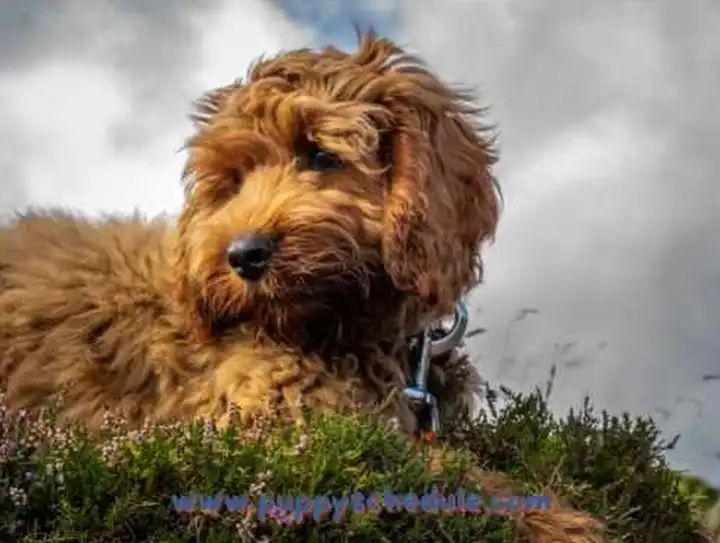Are you in search of dogs with long ears breed? Long-eared dogs often have an undeniably attractive quality, which has appealed to the hearts and minds of many fans. Examples range from Basset Hounds to Bloodhounds; these breeds are typically associated with loyalty and tenderness.
This article will analyze the 10 best dogs with long ears breeds and their distinguishing features. Comprehensive research has been undertaken to guarantee reliable and helpful data is provided, drawing upon expertise from veterinarians and animal behaviorists.
Basset Hound

The Basset Hound is a widely recognized breed known for their long ears, which hang low to the ground. These canine companions are reported to have short legs and are warm and caring – making them ideal family pets. They need frequent training and grooming to keep healthy fur skins like animals.
Bloodhound

Bloodhounds are renowned for their incredibly heightened olfactory senses, rendering them sought after in search and rescue missions. Their long ears serve to trap scent particles, thereby augmenting their already remarkable sniffing prowess. While they can be reliable and caring friends sometimes, they exhibit an independent spirit and are rather obstinate occasionally.
Cocker Spaniel

Due to their friendly and lively temperaments, Cocker Spaniels have become a favored breed of dogs with long ears amongst households. Their long, sleek ears necessitate consistent grooming to avoid tangles and illnesses. These dogs are famous for being smart and capable of adjusting easily, thus making them perfect companions whether they live in an urban or rural area.
Beagle

Beagles are a highly esteemed breed, valued for their remarkable olfactory senses. Their generous nature drives them ideal companions and flawless household pets. It is necessary to deliver frequent training and mental stimulation to prevent restlessness or destructive behavior.
Afghan Hound

The Afghan Hound is renowned for its beautiful aesthetics and speed. Its long, luxurious ears necessitate frequent grooming to avoid knots and tangles. This breed is separate yet devoted to its owners at the same time.
Cavalier King Charles Spaniel

The Cavalier King Charles Spaniel is a highly sought-after breed due to its endearing and caring character. Their long, hanging ears are aesthetically pleasing and donate significantly to their charming looks. These dogs possess the capacity for easy training, which renders them well-suited for various settings of habitation.
English Setter

English Setters are famous for their brilliance and loyalty. Their typical long, floppy ears lend a beguiling appearance to them. They must receive periodic physical exercise and mental stimulation to forestall any negative behavior.
Irish Setter

They are commonly selected household pets due to their amicable and loving character. Their extended, hanging ears necessitate consistent grooming to deter knotting and tangling of the fur. Furthermore, these puppies require routine physical activity and mental stimulation not to become bored or indulge in destructive conduct.
Springer Spaniel

Springer Spaniels are recognized for their high energy and lively demeanor. They possess long, floppy ears, which contribute to their endearing appearance. These dogs require frequent exercise and cognitive engagement to prevent boredom-induced misbehavior.
Cockapoo

Cockapoos are a widely admired hybrid breed, renowned for blending the intelligence of Poodles with the amiable character of cocker spaniels. Notably, they possess long, curly ears groomed regularly to evade matting and infections. Furthermore, Cockapoos make exceptional companions for families who suffer from allergies due to their hypoallergenic genealogy.
Long-Eared Dog Breeding: Finding the Right Breeder
Suppose one is looking to acquire dogs with long ears breed. In that case, one must identify and procure their pup from an authentic breeder to guarantee the animal’s physical health and emotional stability. The following are some suggestions that may aid in locating a trustworthy source:
- Do your research: Before selecting a breeder, thoroughly investigate to ascertain which breeders possess respected reputations and have established successful histories. Seek out those registered with an applicable canine club or organization who follow ethical breeding practices.
- Ask for references: Once you have identified some potential breeders, request testimonials from their prior clients. It can provide a valuable perspective on the breeder’s standing and help ascertain if they are suitable for your needs.
- Check the breeder’s facilities: When visiting a breeder, it is important to observe the cleanliness and overall state of the kennel. The animals should be housed in a hygienic and comfortable environment; furthermore, any reputable breeder should provide potential customers a tour of their facilities upon request.
- Ask about health testing: Responsible breeders should undertake health testing on their dogs to detect genetic health conditions. It is recommended that one enquire with the breeder regarding the extent of such tests and request sight of related results.
- Meet the parents: When visiting a breeder, it is recommended that they request to meet the puppy’s parents if possible. It can afford them an opportunity to get an insight into the temperament and personality traits likely to be passed down from this lineage.
- Ask about socialization: It is important to socialize puppies early to have a balanced temperament and be adapted well. When selecting a puppy, the breeder should be asked about their socialization practices to confirm that the puppy has been sufficiently exposed before bringing it home.
Obtaining a long-eared canine can be an immensely gratifying experience; however, identifying a respectable breeder that offers you a sound and well-adjusted pup is of utmost importance.
In-depth research and asking pertinent questions can help you select a trustworthy breeder. It guarantees the new family member is content and in good health.
References:
- American Kennel Club. (n.d.). How to find a responsible dog breeder. Retrieved from https://www.akc.org/
- Animal Humane Society. (n.d.). Finding a responsible breeder. Retrieved from https://www.animalhumanesociety.org/
- ASPCA. (n.d.). Puppy mills and backyard breeders. Retrieved from https://www.aspca.org
Ear Care for dogs with long ears breeds Preventing Infections and Other Issues.
Here are some tips for preventing ear infections and other ear-related issues in long-eared dogs:
- Keep the ears clean: Frequent cleaning of your dog’s ears is vital in avoiding potential infections or ailments. Always consult a veterinary professional and select an appropriate, mild ear cleanser. Cleaning should be done at least once weekly or as the vet recommends; after concluding, it is important to ensure that all moisture has been thoroughly dried off from their ears.
- Monitor for signs of infection: It is paramount to identify ear infections swiftly, as they can cause immense discomfort and result in more critical health matters if left unattended. Keep an eye out for symptoms of infection, including intense ear scratching, head shaking or wobbling, redness/swelling around the ears, or a disagreeable odor.
- Trim excess hair: Canines with extended ears regularly experience an augmented measure of hair in their ear canals, which may trap dust, rubbish, and dampness. It can prompt diseases; thus, dependable pet care requires that a veterinarian efficiently prune the abundance of hair to guarantee proper canine well-being.
- Prevent moisture buildup: It is imperative to ensure that any moisture in your pet’s ears is dried thoroughly, as it can lead to potential infections or other issues. If your dog has been exposed to water through swimming, bathing, or another activity, take the necessary steps of drying its ears after with a suitable product recommended by their veterinarian. Additionally, using an
- Address allergies: Long-eared dogs can experience complications such as ear infections due to allergies. Therefore, owners of these canine companions should collaborate with their veterinarian to address the allergens and help prevent any subsequent issues related directly to the ears.
- Regular veterinary checkups: Pet owners should bring their long-eared dogs to a veterinarian for regular checkups, enabling any potential ear problems to be identified and treated before they become more serious. Furthermore, questions regarding the dog’s ears were addressed during these visits.
If you give your dog the appropriate attention, its adorable floppy ears will be appreciated for many years.
Grooming dogs with long ears breed Tips and Tricks for a Healthy Coat.
Maintaining your long-eared dog’s coat healthy and well-groomed is important in complementing ear care. Here are some suggestions and schemes for grooming long-eared dogs:
- Brush regularly: Frequent brushing aids in eliminating dirt, residue, and shed fur from your canine’s coat while also aiding in the dispersal of natural oils, contributing to a glossy shine. You must opt for an appropriate brush according to your dog’s type of fur before commencing with gentle strokes around its ears.
- Bathe as needed: Dogs with long ears breed may be more likely to suffer from skin irritations and infections if humidity is held in their coats, thus making it vital to keep them clean. Bathe your dog regularly, utilizing a typical kind of shampoo and conditioner approved by your veterinarian.
- Keep the coat trimmed: Dogs with long hair can experience a buildup of tangles or mats in their coat, particularly around the ears, that needs frequent trimming to maintain healthiness. If you need more confidence to perform this task, taking your pet dog for grooming services from an experienced professional groomer is best.
- Pay attention to skin health: Canines with longer ears may be more likely to suffer from skin irritations, particularly if the fur around them is not kept tidy and dry. Monitor for indications of skin discomfort such as redness, itching, or flaking and speak to your vet should you have any worries.
- Use the right products: It is essential to obtain appropriate grooming products to support the well-being of your puppy’s coat. When selecting these items, ensure they are intended for canine use rather than humans. Human-grade products may be too abrasive and irritate a pup’s delicate skin.
- Regular veterinary checkups: It is highly recommended that dogs with long ears breeds undergo regular checkups to detect any coat or skin issues before they worsen and general health issues. Ensure to bring your canine companion to the vet for routine visits, and don’t hesitate to voice any of your worries about their coat or skin.
Training Long-Eared Dogs: Tips and Tricks for Success
Here are some tips and tricks for successfully training long-eared dogs:
- Start early: It is recommended that training for long-eared dogs begin as soon as possible, particularly while they are always puppies. This course of action allows the opportunity to create positive habits early on and helps avoid potential behavioral problems.
- Use positive reinforcement: A highly successful training technique incentivizes good dog conduct. It can involve the provision of treats, words of admiration, or playtime activities as rewards for exemplary behavior. Positive reinforcement proves to be more effective and less stress-inducing than other punishment-based approaches to canine instruction.
- Be patient: Instruction necessitates time and tolerance, and it is essential to evade becoming exasperated if your puppy fails to take in order promptly. Stay consistent with your exercise and keep instruction periods short but common to fortify good manners.
- Train in a distraction-free environment: When beginning, it is essential to instruct your dog in a tranquil, distraction-free atmosphere to help them concentrate. Once they have achieved mastery of a commandment, they gradually add more distractions to allow the animal to habituate their behavior into diverse situations.
- Use a clicker: Clicker training is a widely accepted and successful approach that uses clicks to indicate desired actions. This technique assists the canine in recognizing which behaviors are being rewarded, accelerating the educational process.
- Be aware of your dog’s unique characteristics: Dogs with large ears may be more susceptible to sound than other overview breeds, meaning extra precaution is necessary during training. As such, loud noises were avoided, and their ears were handled carefully.
- Seek professional help if needed: If one is encountering issues when attempting to train their long-eared canine, it is advised that they seek the assistance of a professional dog trainer or behaviorist. Such individuals can offer customized counsel and training procedures, which may result in both parties’ success.
Teaching Your dogs with long ears breed to Listen.
If you own a dog with long ears name, ensuring their safety and contentment by training them to obey commands is essential.
Here are some tips for teaching your long-eared dog to listen:
- Consistency is essential when training any dog, particularly those with long ears. Utilize the same directives for each activity you wish your canine companion to learn and ensure everyone in the home uses equivalent commands. It will eliminate disarray for your furry friend and enable them to understand more smoothly what you want from them.
- Positive reinforcement is an effective strategy for training any dog, including breed overview with long ears. Give your canine companion compliments, treats, or toys when they respond to and obey commands. This form of positive reinforcement will motivate them to replicate their behavior in the future.
- Begin by instructing your canine companion with the fundamentals such as “sit,” “stay,” and “come.” Establishing these commands is essential for more complex training, which can help foster mutual trust and self-esteem in you and your dog.
- Training a long-eared canine to be attentive requires substantial effort and grit. Expect your pup to understand the order. You must exhibit patience and adherence in the teaching process and celebrate each minor victory that is achieved along the way.
- If there is difficulty training your long-eared canine to obey commands, it may be beneficial to seek the assistance of a professional. Consulting with a veterinarian or animal behaviorist can provide expert advice and guidance that could help you and your pet succeed.
Be sure to use favorable reinforcement and consider obtaining specialist advice, if necessary, to have a cheerful and properly trained puppy quickly.
Socialization for dogs with long ears breeds
Long-eared canines are undeniably charming and distinctive in their aspect. Yet, like all canine species, they necessitate socialization to become socially balanced and obedient parts of society. Socialization involves exposing one’s four-legged companion to various encounters, individuals, and other animals so they become accustomed to diverse circumstances with assurance and composure.
Socialization is a critical component of training dogs, regardless of breed. In the case of long-eared breeds, however, it becomes an even more important factor due to their distinct physical features. The longer ears can become obstructive and distracting during interactions with other animals or in novel settings.
Acclimating long-eared dogs to various social situations through proper socialization can help them better deal with circumstances where their ears may be a barrier. Furthermore, it allows these animals to gain confidence and feel more at ease in novel environments, limiting the possibility of developing fear or anxiety issues.
How to Socialize Dogs With Long Ears Breed
Starting socialization as early as possible is highly recommended, ideally during the pupping period. Nevertheless, there are still strategies for acclimating your long-eared canine companion, even if it still needs to be done earlier.
- Start Slow: Introducing your canine companion’s socialization process in a tranquil and regulated environment, such as your backyard, is advisable. Over time, they should be incrementally exposed to novel experiences with other people or animals, one at a time.
- Positive Reinforcement: Employ positive reinforcement strategies such as offering treat rewards and expressing praise to reward your canine for displaying tranquil and composed conduct during socialization encounters.
- Exposure to Different Environments: One should expose their dog to various surroundings, such as parks, pet stores, and bustling roads, to acclimate them to diverse scenarios.
- Meeting Other Dogs: You should enable your canine companion to interact with other dogs in an organized setting, such as a dog park or while under the watchful eye of another owner. Pay attention to their behavior and take action if necessary.
- Exposure to Different People: It is recommended that you acclimatize your canine companion to a wide range of people, including children, males, females, and persons from various ethnic backgrounds and ages. It is gradual with the use of positive reinforcement techniques.
- Obedience Training: Signing your dog up for obedience training classes can help them learn the basics of commands and become more compliant and well-mannered.
- Consistency: Maintaining a steady and consistent approach while socializing your long-eared dog is essential. Make sure you keep exposing yourself to new situations throughout your life for the socialization process to remain ongoing.
Conclusion
The dogs with long ears breed has gained a special appeal with dog lovers due to its distinctive qualities. It is vital that individuals researching this breed assess their requirements to choose the right variety for them and their lifestyles.



